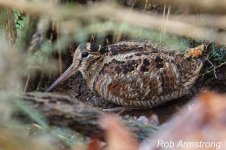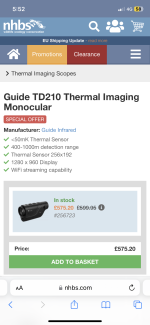Andy Lakin
Well-known member
I have been interested in getting one for a while but haven't a clue what to get.The tech specs mean nothing to me so any pointers would be much appreciated. I'f anybody has used a particular model please give a short review. My dad goes rabbit shooting at night and says that he had 41 Woodcock just in 2 fields the other night so it shows what is out there (not hunting them just observing). He was also saying that he was blown away with the ability to pick out small mammals I.e mice etc over a decent distance and also watch bigger mammals up close without disturbing them.Has anybody used them for detecting cryptic species such as Long Eared Owls to find them without disturbing them?
There seems to be a vast difference in price levels, am I right in thinking that you need to be spending around £2000 for something decent? There was a review of one in a recent edition of Birdwatch (will have to look the model up) ive saved a YouTube video about it but haven't had the time to watch it yet. Any feedback gratefully received. It seems that if these become more widespread it may reveal a lot more birds of certain species.
Cheers Andy
There seems to be a vast difference in price levels, am I right in thinking that you need to be spending around £2000 for something decent? There was a review of one in a recent edition of Birdwatch (will have to look the model up) ive saved a YouTube video about it but haven't had the time to watch it yet. Any feedback gratefully received. It seems that if these become more widespread it may reveal a lot more birds of certain species.
Cheers Andy














